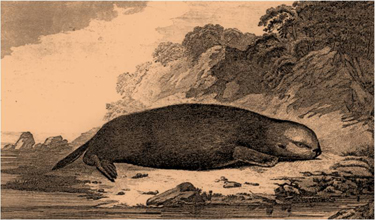
Post-contact history
Gwaii Haanas National Park Reserve, National Marine Conservation Area Reserve, and Haida Heritage Site

Skedans Village circa 1878 © G.M. Dawson / Library and Archives Canada
Survivor migration
In the late 1700s, during the time of first contact with “those from away” at least 20,000 Haida are estimated to have lived on the islands. The population plummeted with the introduction of diseases such as smallpox, measles and tuberculosis.
By the late 1800s, fewer than 600 Haida were left on Haida Gwaii. The survivors from the southernmost villages gathered at SGang Gwaay Llnagaay and were invited to come live at HlGaagilda Llnagaay, (the Haida name for Skidegate). People slowly moved northward from T’aanu Llnagaay (Tanu), K’uuna Llnagaay (Skedans), K’aadaas Guu Llnagaay (New Kloo) and Hlkinul Llnagaay (Cumshewa). Today, descendants are concentrated in Skidegate and Old Massett.
Industrial History
Abandoned mining sites, whaling stations, fish canning and salting plants, logging camps and roads, tramways and shipwrecks dot the area. These sites record the early presence of European, American and Japanese industrial activities in Gwaii Haanas. Most of this activity took place in the early and mid-20th century.
 A sea otter sketch by John Webber on Captain James Cook's 1778 expedition to the northwest coast
A sea otter sketch by John Webber on Captain James Cook's 1778 expedition to the northwest coastThe Fur Trade
The maritime fur trade around Haida Gwaii occurred largely between 1787 and 1840. The large-scale trade in pelts hunted by the Haida over this period devastated the sea otter population and precipitated enormous cultural changes for the Haida.
The traders' (mostly British and American) goods were in demand by the Haida, as much as the furs were in demand by faraway markets.
A great amount of wealth was gained during this period by all involved. Trading ship’s records indicate that more than 100 pelts a day were collected from some villages during the peak periods.
The sea otter was so important to the Haida and the islands ecosystems that the Archipelago Management Board (the co-operative board which manages Gwaii Haanas National Park Reserve, National Marine Conservation Area Reserve and Haida Heritage Site) chose that as their crest.
- Date modified :